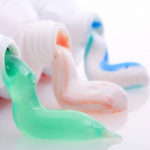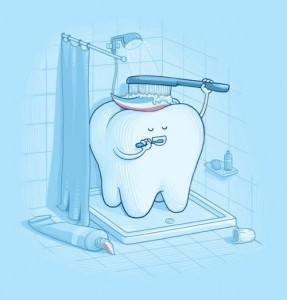
With so many options in the dental health isle choosing toothpaste can be a little overwhelming. From baking soda, whitening, foaming, desensitizing, tarter control, anti-gingivitis, fluoride…the list can go on and on. No matter the brand always select a toothpaste with the American Dental Association (ADA) seal of approval. Dr. Tillman has a few tips for choosing the right toothpaste for you and your family’s needs.
- Anti-cavity: Almost all the options on the market contain fluoride. Fluoride is just as important as brushing in preventing decay and it actively strengthens tooth enamel.
- Anti-gingivitis: Do your gums suffer from redness and bleeding? You might have gingivitis, a mild form of gum disease. Anti-gingivitis toothpastes help reduce oral bacteria and can be very effective at stopping this gum condition at its source.
- Desensitizing: Ever take a sip of hot coffee or a cold beverage and feel a shooting pain? This type of toothpaste might help to give you some relief – it helps reduce pain by blocking the tooth’s pain signal to the nerve.
- Tartar-control: As its name indicates, tartar-control toothpaste helps prevent the buildup of tartar. While this product is helpful in slowing new buildup on teeth, a professional dental cleaning is the only way to remove existing tartar and the bacteria it harbors.
- Whitening: Containing polishing or chemical agents that remove surface stains, this toothpaste is able to help maintain the natural color of your teeth.

 your kids to brush their teeth, yet alone like it, can be tricky. We have some tips that might help you to get your kids brushing and like it!!
your kids to brush their teeth, yet alone like it, can be tricky. We have some tips that might help you to get your kids brushing and like it!! it comes to chewing gum, it’s the type of gum you chew that makes a difference in whether it’s helpful or harmful to your teeth. While chewing gum containing sugar may actually increase your chances of developing a cavity, there is evidence that demonstrates just the opposite for sugar-free gum. And there’s even better news when it comes to chewing sugar-free gum that is sweetened with xylitol.
it comes to chewing gum, it’s the type of gum you chew that makes a difference in whether it’s helpful or harmful to your teeth. While chewing gum containing sugar may actually increase your chances of developing a cavity, there is evidence that demonstrates just the opposite for sugar-free gum. And there’s even better news when it comes to chewing sugar-free gum that is sweetened with xylitol.